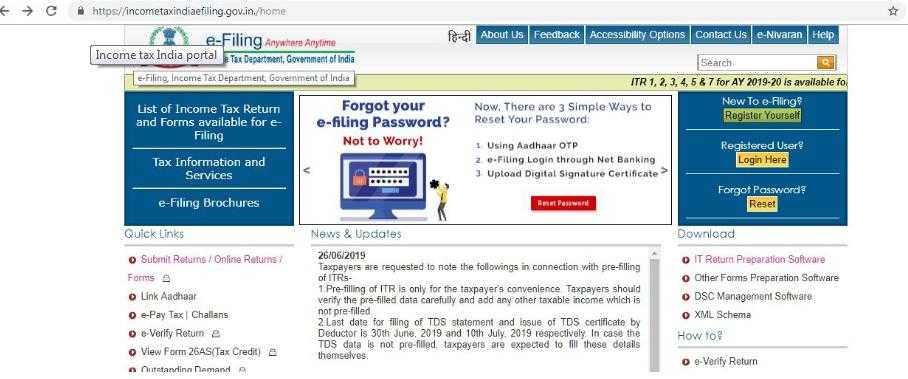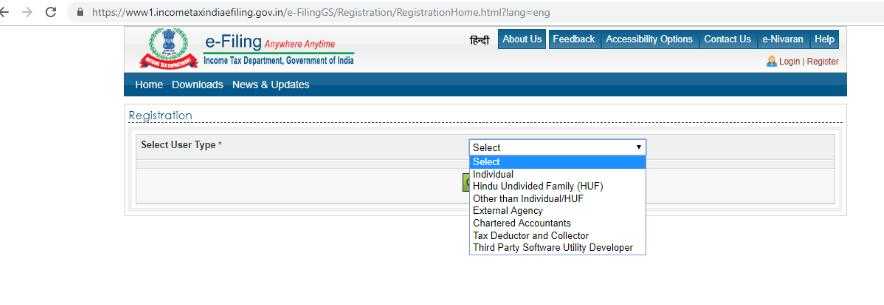Being self-employed is indeed an attractive career option. You work for yourself and make your own decisions, earn your profits. From a financial standpoint, a self-employed person has the flexibility to manage his/her taxation entirely by taking full control over planning income and expenses to reduce their taxes. It, therefore, becomes crucial to understand income tax for self employed as per Income Tax Act and plan accordingly.
Who is Considered as Self-Employed?
Self-employed ITR form is for those individuals who sell his or her services to different employers without binding a full-term contract with any of them. Under “Profit and gain from Business or Profession” Income Tax Act, 1961, levies tax on the income of self-employed individuals.
In the act, self-employment is referred to as a profession. The business is defined in the act as, “any trade, commerce or manufacture or any adventure or concern such as trade, commerce or manufacturing”. However, the profession is not defined in the act. The profession also includes vocation, as mentioned in the law.
Examples of occupations that fall under the category of profession/vocation include –
- Author
- Doctor
- Painter
- Dancer
- Auditor
- Attorney
- Designer
- Astrologer
Profit is to be computed after the deduction of all losses and expenses incurred for earning income in the regular course of business, profession or vocation. People earning income from a profession have to get their accounts reviewed by chartered accountants and submit tax audit report if their gross receipt is Rs. 50 lakh or more during a financial year.
How to Calculate Income for Self-Employed?
To calculate income to file ITR for Self-employed, the Income Tax Act offers two options –
- Calculate the taxable income on a presumptive basis without claiming any deduction for expenditures
- Claim all the costs and calculate the real profit
In case you select the second option, make sure you have proper books maintained of account to submit as proof. Also, if your income exceeds Rs.50 lakh, you need to get your account books audited from a certified official.
Self-Employment Tax in India
- ITR for self-employed allows them to claim several tax deductions from the gross taxable income
- They include costs incurred towards the profession, interest on loans to carry out the business, insurance for and depreciation of salaries to employees, assets and day-to-day office expenses
- Expenditures such as internet bill, electricity bill, telephone bill and travelling costs are also allowed to be deducted from the gross income
- Remember that while filing ITR for self-employed, there must be legal proof of the expenses for every such deduction
- Recently, the Indian Government has offered a choice of tax-filing to the self-employed professionals (those having an income of less than Rs. 50 lakh in a year) by way of a presumptive tax system. It means the assessee has the choice of filing his taxes either in a conventional way or through the presumptive tax method
- According to the presumptive tax method, self-employed professionals are allowed to claim expenses at the rate of 50% of the gross income, and the income tax is calculated on the outstanding 50% percent while adding any interest income to it
- In this method, you do not need to show any proof of expense separately, and you are not required to maintain accounting records.Income tax for freelancers in India also applies the same taxation scheme. You can look at freelance tax India for more detailed information'
How to File ITR for Self-Employed?
- In case you are wondering which ITR form for self-employed must be used, ITR for self-employed individuals can be filed through ITR-4.
- In ITR 4, a percentage of the receipts are counted as net income, and tax will be paid on that, instead of claiming business costs against those receipts and paying tax on the balance.
The income earned by self-employed individuals is logged under ‘income from business or profession’. It also includes income tax for business and ITR for businessman
Here are a fewe-filing strategies that will make ITR for self-employed individuals simpler to understand:
- Understanding the Tax Treatment
A self-employed individual refers to someone who does not earn a fixed salary or income from a company. They are hired on a contractual or an assignment based employment for a specific period. Hence, from a tax perspective, the income is ‘Profit Gains of Business Profession’. ITR for self-employed thus means that they have to pay taxes on the combined income earned in a financial year. All earnings, irrespective of the amount, should be added to the gross income for the year.
- Choosing the Right ITR
ITR-3 or ITR-4 is the correct ITR for self-employed individuals. Selecting the right ITR is a crucial step for e-filing your income tax returns.
- Tax Deducted at Source
Whenever self-employed people receive a payment from a client, they will receive it after deduction of tax (TDS) on it. You must also be aware of Section 194J of the Income Tax Act that mandates TDS from payments made to professionals. TDS is deducted at a 10% rate on the payments made. However, the good news is that, just like salaried individuals, self-employed individuals can claim a refund on the TDS that is deducted on your behalf through the process of e-filing.
- Claiming expenses to reduce tax outgo
Since your income is treated as profits and gains of a business, even you can claim certain expenses that you have incurred towards getting this business. You can use these costs to reduce your income and tax on it. These expenses can include rent for workspace, food and entertainment expenses due to meetings, depreciation of office equipment, and travel costs.
These are a few ways that ITR for self-employed individuals can be simplified. Remember to e-file before the due date to avoid an income tax notice from the tax department.
Steps to File ITR for Self-Employed Online
The process to e-file ITR for self-employed individuals is by using the internet at your convenience and time. The process to e-file ITR for self-employed is a quick and easy way. You can file ITR for self-employed from the comfort of your couch. E-filing ITR for self-employed can also help in saving money as you would not have to hire an individual to file ITR.
Follow the steps below to file ITR for self-employed online:
Step 1: Log into the official e-filing website (https://incometaxindiaefiling.gov.in).

Step 2: Register or login yourself on the portal to continue filing ITR for self-employed.
Step 3: Select the user type to register yourself with the Income Tax Department. Next, you will have to enter your current address and your permanent address before entering the Captcha code and hitting ‘Submit’.

Step 4: You will then have to fill in your personal information such as your name, your PAN and your date of birth. You can then use PAN as your user ID whenever you log in to the e-filing portal to file ITR for self-employed. Also, you have to enter your contact details like your mobile number and mail ID.

Step 5: Your PAN will then be verified by the system and your transaction ID as well as contact details will be displayed on the screen.
Step 6: Lastly, activate your Income Tax Department account through the link sent to your email ID to complete filing.
Frequently Asked Questions (FAQs)
- How to calculate my self-employment tax?
- Self-employment tax is calculated on the earnings of a businessman or self-employed individual. It is calculated based on the rates in force on the net earnings from self-employment. It is are after subtracting your business expenses from your gross revenues.
- How much money do you need to file ITR for the businessman as an independent contractor?
- As an independent worker, there is no minimum requirement to be eligible to file ITR for self-employed.
- Do you pay self-employment tax if you have a net loss for that year?
- No, tax is not required to be paid on a loss from a business. Further losses can be carried forward to be set off against the profits from the business of next year(s).
- How do I avoid paying taxes as a Self-Employed Individual?
- You can reduce your tax liability by making use of the deductions and exemptions provided by the income tax act.
- Is TDS deducted from the income from a profession?
- Yes, the income that the professionals receive is payable only after deducting TDS @ 10% under the provisions of Section 194J of the Income Tax Act.
Sources - https://incometaxindiaefiling.gov.in




